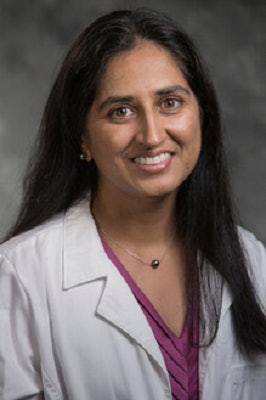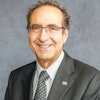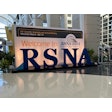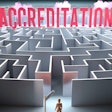
Nearly 15 years of work toward paid family/medical leave for radiology took a historic step forward for Dr. Elizabeth Arleo from Weill Cornell Medicine and others when the American College of Radiology (ACR) passed a resolution in April.
 Dr. Elizabeth Arleo.
Dr. Elizabeth Arleo."It was thrilling to see," said Arleo on the resolution's passing. Arleo is one of the women who led the movement, which researchers are heralding as the first medical society to pass such a resolution.
"We take the Hippocratic oath to put our patients' health first and yet to do that, we have to take care of ourselves," Arleo said in an interview with AuntMinnie.com. "I think the conservation is quickly coming around to physician well-being, and paid family and medical leave is a cornerstone of that."
The ACR resolution recommends providing 12 weeks of paid family/medical leave in a 12-month period for its attending and trainee physicians as needed. This is directed at all practices, departments, and training programs for diagnostic radiology, interventional radiology, radiation oncology, and nuclear medicine.
The federal Family Medical Leave Act (FMLA) of 1993 gives employees the right to 12 weeks of unpaid, job-protected leave per year for childbirth and care, or care for serious health conditions. This goes for employers with 50 or more employees within 75 miles of an employee's worksite.
However, the unpaid aspect of FMLA poses a problem for some in the medical field, with researchers saying residents in training get the short end.
.png?auto=format%2Ccompress&fit=max&q=70&w=400) Kristin Porter, PhD.
Kristin Porter, PhD."FMLA is an exclusive policy only available for those who can afford it," said Kristin Porter, PhD, from the University of Alabama at Birmingham. "Unfortunately, the timing of at least parental leave occurs when people can least afford it during training or early in careers. It's important for inclusion in radiology that this is paid."
Arleo, Porter, and Dr. Kirti Magudia, PhD, of Duke University began their most recent advocacy push in 2018 through the American Association for Women Radiologists (AAWR). Arleo and Porter are previous presidents of the association. Magudia is also a councilor-at-large for the ACR.
The three are co-sponsors of the ACR resolution, along with Dr. Susan Ackerman, Dr. Lucy Spalluto, and Dr. Candice Johnstone. A total of 21 state and national radiological organizations also signed on as co-sponsors.
In 2019, the Society of Chairs of Academic Radiology Departments wrote an editorial supporting the AAWR's call for 12 weeks of parental leave. Arleo said while this was "a great step forward," the letter focused on academics in radiologists and not private practice radiologists.
"Also, it included parental leave, but not medical leave, so the next step was a more inclusive policy that had paid family and medical leave at the ACR level," she added. "Radiologists in diverse practice types can benefit."
Arleo said paid family and medical leave has been a passionate topic of hers since 2007 when she was pregnant with her first child. She was a resident at New York-Presbyterian Hospital. While she had a supportive institution, Arleo knew that many others were not so fortunate.
"At the time, the culture was just no one had taken more than six weeks even when having a baby or what was allowed under policy," she said. "It was not only about changing policies consistent with federal law, but also changing culture, which is harder to do and for people who don't know their rights enough to exercise them."
 Kirti Magudia, PhD.
Kirti Magudia, PhD.Arleo and Porter wrote in a March editorial that potential savings of family leave outweigh the costs when issues with recruitment, retention, and presenteeism are considered. Savings can also come from short-term disability or state-paid leave programs, they added. The ACR resolution also supports these points.
The team is working on two follow-up pieces related to the resolution's passing. One is a scholarly perspective that aims to encourage other medical specialties to create similar paid family and medical leave resolutions. The other is a how-to guide on implementing paid leave in clinical practices.
"We're looking at how we can generate data to the benefit of our advocacy goals. We want to leverage the network of AAWR for research," Magudia said. "Research is the best way to motivate change and it's hard to argue with data. I think it can go very far in helping with inclusive cultural change."




















